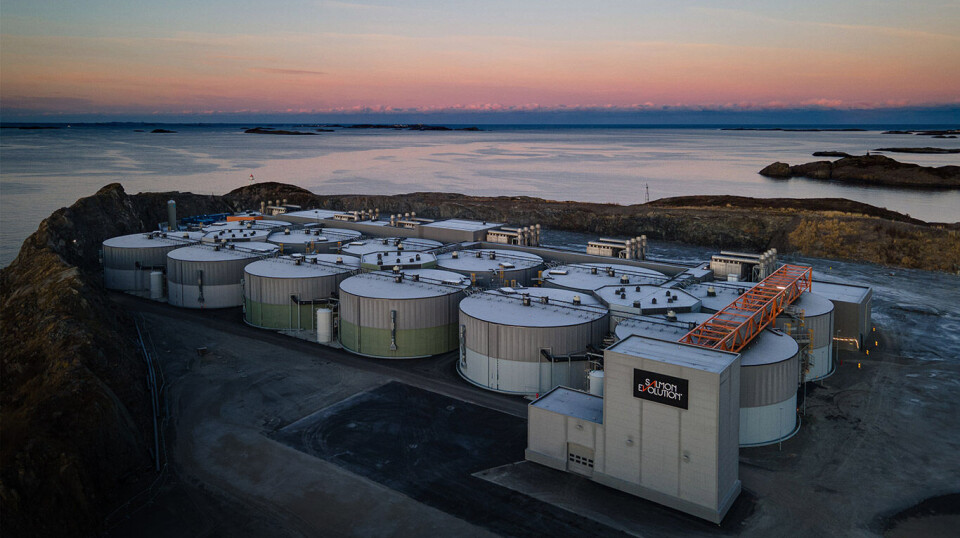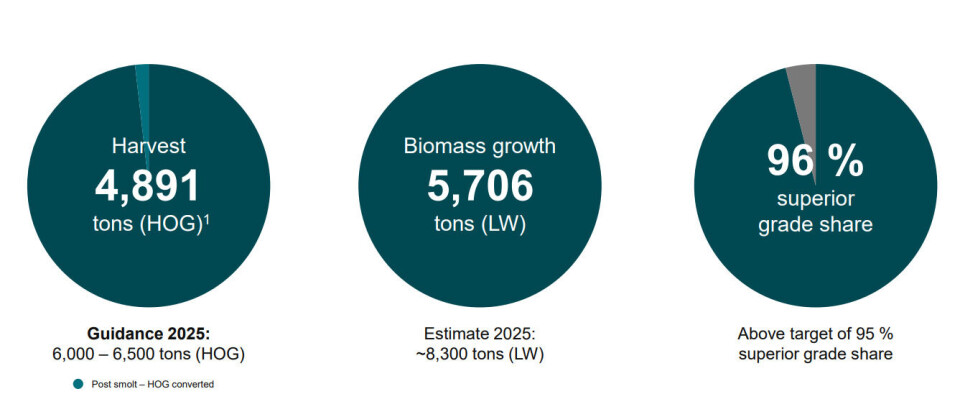
Salmon Evolution delivered first post-smolts in Q4
Land-based farmer also harvested 1,640 gutted weight tonnes of food fish
Land-based fish farmer Salmon Evolution delivered 105 tonnes of live post-smolts to “a well-known salmon farmer” in the final quarter of last year, following its decision to use excess capacity at its hybrid recirculation / flow-through system at its facility on the island on Indre Harøy, Norway, for commercial post-smolt production.
The delivery comprised approximately 150,000 individuals at ~700 grams. A second delivery is planned this month.
Salmon Evolution also harvested around 1,640 tonnes (head on gutted) of food fish in Q4, the company said in an operational summary published today.
4,891 tonnes for the year
Full-year harvest volume, calculated to include the post-smolts at 84% of their live weight to simulate gutting, was 4,891 tonnes HOG. Salmon Evolution expects to harvest between 6,000 and 6,500 tonnes HOG this year, including post-smolts. The company expects to harvest 1,100 tonnes HOG in the current quarter.
The average harvest weight of ~3.8 kg HOG in Q4 was up 15% from the previous quarter, with continued excellent product quality and a superior grade share of 95%, said Salmon Evolution. For the full year, superior share was 96%.
Biomass production in Q4 was 1,518 tonnes live weight, the second highest on record and up 11% quarter on quarter. Standing biomass was 2,023 tonnes live weight (LW) at the end of Q4. Biomass growth in 2024 was 5,706 tonnes LW and is anticipated to be 8,300 tonnes LW this year.

All-in price realisation on harvested fish in the quarter was NOK ~82/kg.
The survival rate of Salmon Evolution’s ninth batch of fish was reported to be 97.4%.
“Salmon Evolution achieved significant milestones in 2024 with solid growth in harvest volumes and strong operational progress through the year,” said chief executive Trond Håkon Schaug-Pettersen said.
“We are especially proud of our excellent biological results, introducing a new standard of salmon farming and giving us a great momentum going into 2025.”